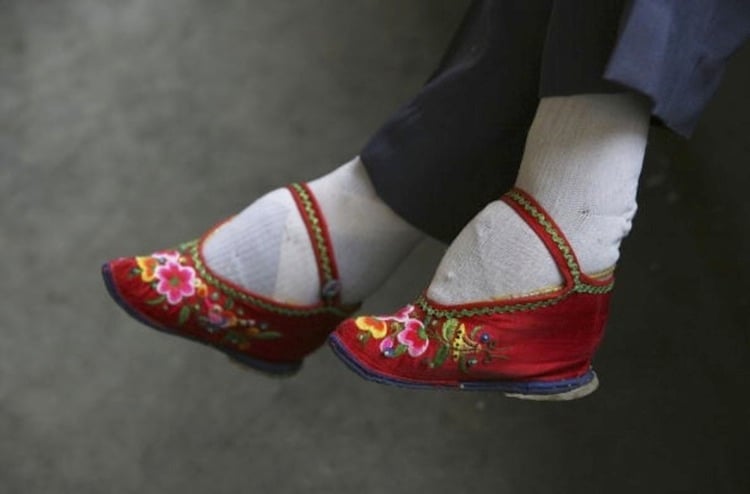CHOPINES
The precursors to the high heel, Chopines were a popular platform in Venice in the 15th, 16th and 17th centuries. Made from wood, cork and sometimes metal, chopines were originally used as a clog or overshoe to protect walkers from mud and street soil. When newer styles began to emerge, they became a status symbol as the platform’s height literally elevated the status of the wearer. Some of the tallest reached a staggering 20 inches tall.


BULLET/TORPEDO/CONE BRAS
While best remembered on Madonna, the cone bra made its first appearance well before the ‘material girl’ in the 1940s. But before Madge wore it outside her clothing, women typically wore it under tight clinging t-shirts and sweaters to accentuate their breasts and form the famous “Sweater Girl” look. These types of bras were made of nylon and were usually ironed by women to retain their shape. However, the trend declined in the 60s as the more ‘au natural’ look gained appeal.

The precursors to the high heel, Chopines were a popular platform in Venice in the 15th, 16th and 17th centuries. Made from wood, cork and sometimes metal, chopines were originally used as a clog or overshoe to protect walkers from mud and street soil. When newer styles began to emerge, they became a status symbol as the platform’s height literally elevated the status of the wearer. Some of the tallest reached a staggering 20 inches tall.


BULLET/TORPEDO/CONE BRAS
While best remembered on Madonna, the cone bra made its first appearance well before the ‘material girl’ in the 1940s. But before Madge wore it outside her clothing, women typically wore it under tight clinging t-shirts and sweaters to accentuate their breasts and form the famous “Sweater Girl” look. These types of bras were made of nylon and were usually ironed by women to retain their shape. However, the trend declined in the 60s as the more ‘au natural’ look gained appeal.

FOOT BINDING
Popular in China, the cruel female fashion trend of the Lotus Foot, or
foot binding, was inspired by a Prince’s concubine who used to dance
with her small feet shaped like a Lotus flowerbed. The ideal eventually
spread to wealthy families and soon became a status symbol that could
even determine whom the girls could marry. Beginning at the wee age of 5
or 6, the Chinese finally outlawed the trend in 1949.


THE MULLET
The mullet hairstyle boasts a contrasting and distinct mix of short hair
in the front and longer looking “tail” down the back. Prominent mainly
in the 60s and 70s, this trend can actually (and unfortunately) be dated
back to the 6th century Byzantine Era when rebels cut their hair to
stand out among the Roman crowd. The style’s popularity hit dizzying
heights in the 1980s when musicians like Duran Duran, Billy Ray Cyrus,
David Bowie, Sting and Bono sported the look. Why the name? Some
speculate it has to do with the Beastie Boys’ reference to the term
‘mullet heads’.

SAGGING
Sagging is the intricate style in which one wears their pants just below
their waist to reveal a large portion of underwear. The trick, however,
is not letting them drop. Many believe that the trend began in American
prisons, as inmates weren’t allowed to wear belts due to fears that
they would use the belts to commit suicide.









